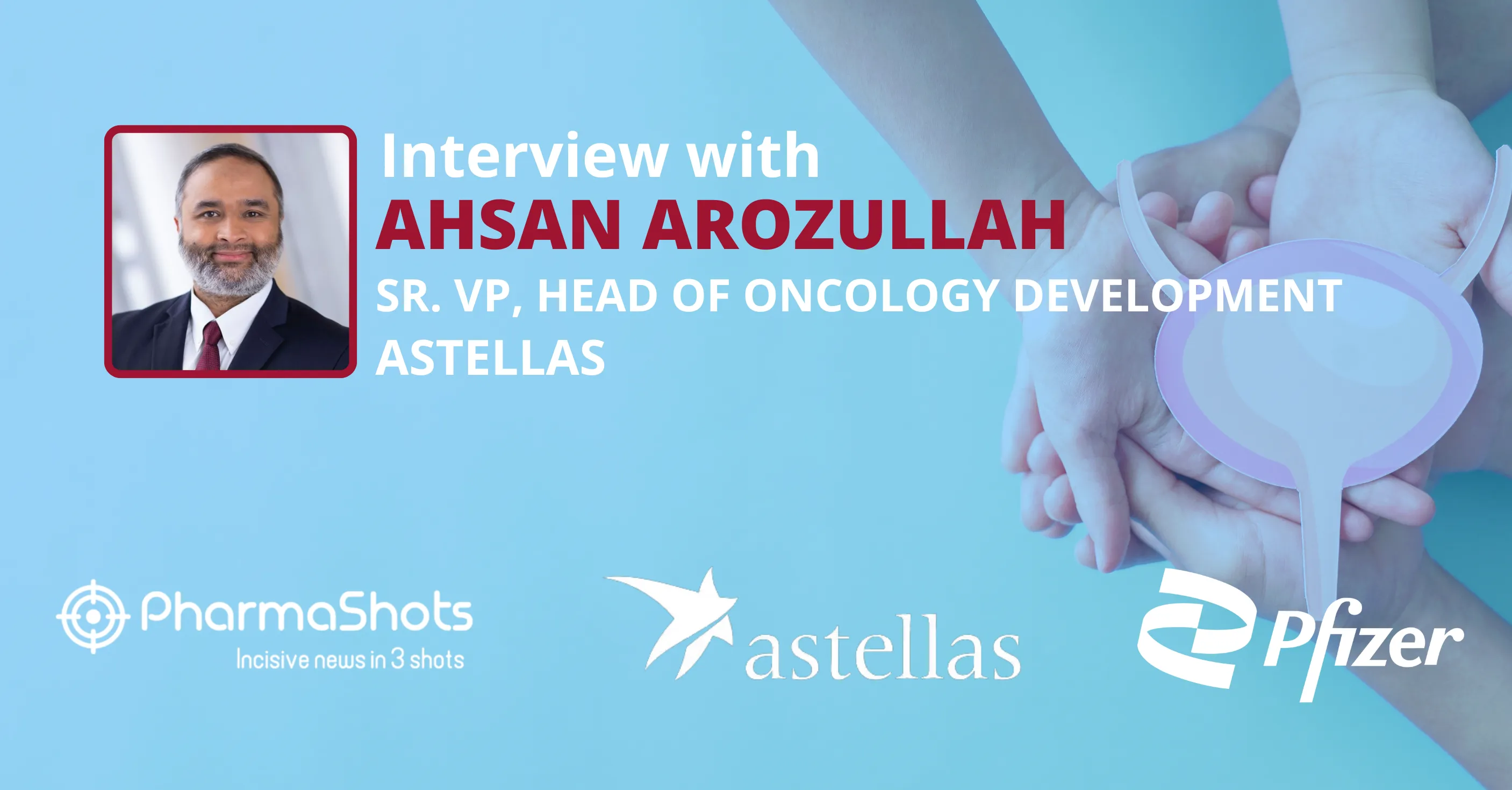
Dr. Bill La Via, Medical Director at Sanofi Shares Insights from the Findings that Support the Need of Protecting Infants from Respiratory Syncytial Virus (RSV)
Shots:
- Bill spoke about Respiratory Syncytial Virus and how it can severely affect infants' health
- Bill also talked about the 14 studies on RSV published in the Journal of Infectious Diseases (JID)
- The interview gives an understanding of how Sanofi’s vision to develop innovative solutions to help reduce the burden of RSV on infants, families, and healthcare systems
Smriti: As (Respiratory Syncytial Virus) RSV is an easy-to-catch virus, can you please shed some light on its structure, pathophysiology, preventive measure, and impact on infants’ health?
Bill La Via: Respiratory syncytial virus (RSV) is an enveloped, negative-sense single-stranded RNA virus. It’s a highly contagious, incredibly common, and often unpredictable virus that can lead to respiratory illness, including lung infections, such as bronchiolitis and pneumonia. The pathophysiology of lung infection is driven by direct infection of respiratory epithelial cells leading to mucosal swelling and increased mucous production. This occurs in combination with an inflammatory immune response that contributes to obstructive lung disease, which is seen in approximately 30% of infants with RSV and leads to the hospitalization in 1-2%.
That’s why RSV is one of the greatest threats to the health of infants in their first year of life – it’s actually the leading cause of hospitalization, and even healthy, full-term infants are at risk of severe outcomes. Approximately, 72% of infants hospitalized for RSV were born at term with no underlying conditions. To put this in perspective: we often think of the flu as a major health threat to babies (and do everything we can to prevent it through immunization of children 6 months and older and mothers while pregnant), but infants are 16 times more likely to be hospitalized from RSV than the flu in the US.
Despite this, many parents aren’t familiar with RSV or aware of the fact that even healthy, full-term infants are at risk of severe outcomes like hospitalization. And hospitalizations are only one part of the RSV burden: 97% of healthcare visits among young children with RSV in the US are to outpatient services, of which 25% are emergency department visits. So, it’s important for us to help families become aware of the steps they can take today until a preventative solution becomes available for all infants. At the moment, preventative options for all infants are behavioral: frequent hand washing, disinfecting toys and surfaces, avoiding close contact with those who are ill, avoiding kissing infants when one is ill and touching infants with unwashed hands, and avoiding sharing utensils.
It’s also critical that we work to shift providers’ mindsets when it comes to RSV. For too long, it’s been perceived as a virus that is dangerous for our “highest risk” babies. Those of us on the front lines of RSV research and care have known for some time that RSV is a threat to ALL infants, and the findings from our Journal of Infectious Diseases (JID) supplement only make this picture clearer. We need to rethink our definition of risk and how we approach – and support families – with respect to prevention for all.
Smriti: Can you please discuss the epidemiology, rate of hospitalization, and diagnosis of RSV infections?
Bill La Via: The epidemiology of respiratory syncytial virus (RSV) has not changed as our recent publication in the Journal of Infectious Diseases (JID) confirmed, and according to the CDC this very contagious virus is responsible for an estimated 58,000 hospitalizations among children under 5 years of age each year in the US. Although RSV is common in all infants, the focus for the last several decades has been on infants with the highest risk of hospitalization, such as those born prematurely, or with heart or lung disease. Our supplement in the JID demonstrated that over 75% of the RSV burden in the US occurs in healthy, term-born infants and that there are more deaths among full-term infants than in those that are born prematurely. So, this is really a virus that impacts – and can be severe for – all babies. That said, I do want to point out that our analysis in JID also showed that infants on Medicaid insurance or who identify as Native American, or Alaska Native were at particular risk for severe outcomes of RSV.
Smriti: Since RSV is a winter virus but it also showed some spiking in summers, can you discuss this unpredictable nature of RSV?
Bill La Via: Historically in the US, respiratory syncytial virus (RSV) has been a winter virus occurring during November through March, though it can vary by local areas. However, in 2020 due to the precautions people took to help prevent the spread of Covid-19, those same precautions also helped mitigate infections of other respiratory viruses, like RSV and flu. But then, in the summer of 2021, RSV cases unexpectedly started to rise across the US. As Covid-19 precautions loosened kids were suddenly exposed to RSV for the first time and it caused an unprecedented surge in summer cases. We’ve seen similar patterns this year in some areas such as the southern US as well, potentially because of stringent Covid precautions in the winter during the first Omicron wave. This is yet another reason why we need new preventative strategies that help keep all infants safe from severe RSV disease.
Smriti: Please give our readers some insights from the 14 studies on RSV published in the Journal of Infectious Diseases (JID)
Bill La Via: Our new collection of studies published in the Journal of Infectious Diseases (JID) illustrate that the burden of respiratory syncytial virus (RSV) on all infants, their families, and the healthcare system is even more vast than previously understood.
A few other key findings from the JID that I’d like to highlight include:
- The full magnitude of hospitalizations for infants is likely underestimated; similarly, it suggests that deaths outside the hospital related to RSV have been underreported – so the mortality burden is still not fully known.
- A modeled strategy to immunize all infants in the US has the potential to significantly decrease the health and economic burden associated with RSV, including an estimated 55% reduction in ER visits and 49% reduction in direct medical costs.
Ultimately, our findings in the JID underline the need to treat RSV as a public health threat that warrants a robust public health response in which prevention is available to all infants regardless of who they are, where they live, or how they’re insured.
Smriti: What are the upcoming products of Sanofi for RSV?
Bill La Via: Recently, Beyfortus (nirsevimab) was approved by the European Union (EU) for the prevention of respiratory syncytial virus (RSV) lower respiratory tract disease in newborns and infants during their first RSV season. Beyfortus is the first and only single-dose RSV protective option for the broad infant population, including those born healthy, at term or preterm, or with specific health conditions. The approval was based on results from the Beyfortus clinical development program, including the MELODY Phase III, MEDLEY Phase II/III, and Phase IIb trials following the recommendation by The Committee for Medicinal Products for Human Use (CHMP) of the European Medicines Agency in September 2022. The US submission has also been made and we are looking forward to an acceptance by year-end.
Smriti: Can you share more about the trial evaluating Nirsevimab (Study design and trial results)?
Bill La Via: The nirsevimab clinical development program includes the Phase 3 MELODY trial, the results of which contribute to the body of evidence demonstrating nirsevimab’s potential to help protect all infants with a single dose across the respiratory syncytial virus (RSV) season. MELODY was a randomized, placebo-controlled trial conducted across 21 countries designed to determine the efficacy of nirsevimab against medically attended lower respiratory tract infection (LRTI) due to RSV through 150 days after dosing, versus placebo, in healthy late preterm and term infants (35 weeks gestational age or greater) entering their first RSV season.
Smriti: Are there any patient education/HCP education programs that you are running to spread awareness about RSV?
Bill La Via: We recently launched our own respiratory syncytial virus (RSV) disease awareness consumer campaign, Knowing RSV (www.knowingrsv.com), in the US in timing with RSV Awareness Month (October). It offers information, education, as well as personal stories from families who have been impacted by RSV. Additionally, US health care providers can visit RethinkRSV.com (www.rethinkrsv.com) to stay informed about RSV and connect with their peers.
Smriti: As Covid-19 and RSV are both respiratory viruses, are infants with RSV at risk of getting Covid-19?
Bill La Via: With respiratory syncytial virus (RSV) and Covid-19 circulating together, infants can potentially be infected with both at the same time. Clinically speaking, RSV infection in infants leads to more complications than Covid-19, including hospitalization and need for ICU care. And again, measures to control the spread of Covid-19 have impacted the circulation patterns of RSV, with cases and hospitalizations of RSV growing in 2021.
Source: Live Sciences
About the Author:

Dr. Bill La Via is a Medical Director at Sanofi. He is an experienced physician who has practiced pediatric infectious diseases in an academic practice as well as in private practice; he also has experience in managed care, diagnostic metagenomics, and the vaccine industry. Dr. La Via received his M.D. from the Medical University of South Carolina (MUSC) and trained in both pediatrics and pediatric infectious diseases at the University of California, Irvine.
Related Post: PharmaShots Interview: Sanofi’s Chris Soria Shares Insights on Amcenestrant for the Treatment of Breast Cancer
Tags

Senior Editor at PharmaShots. She is curious and very passionate about recent updates and developments in the life sciences industry. She covers Biopharma, MedTech, and Digital health segments along with different reports at PharmaShots.













